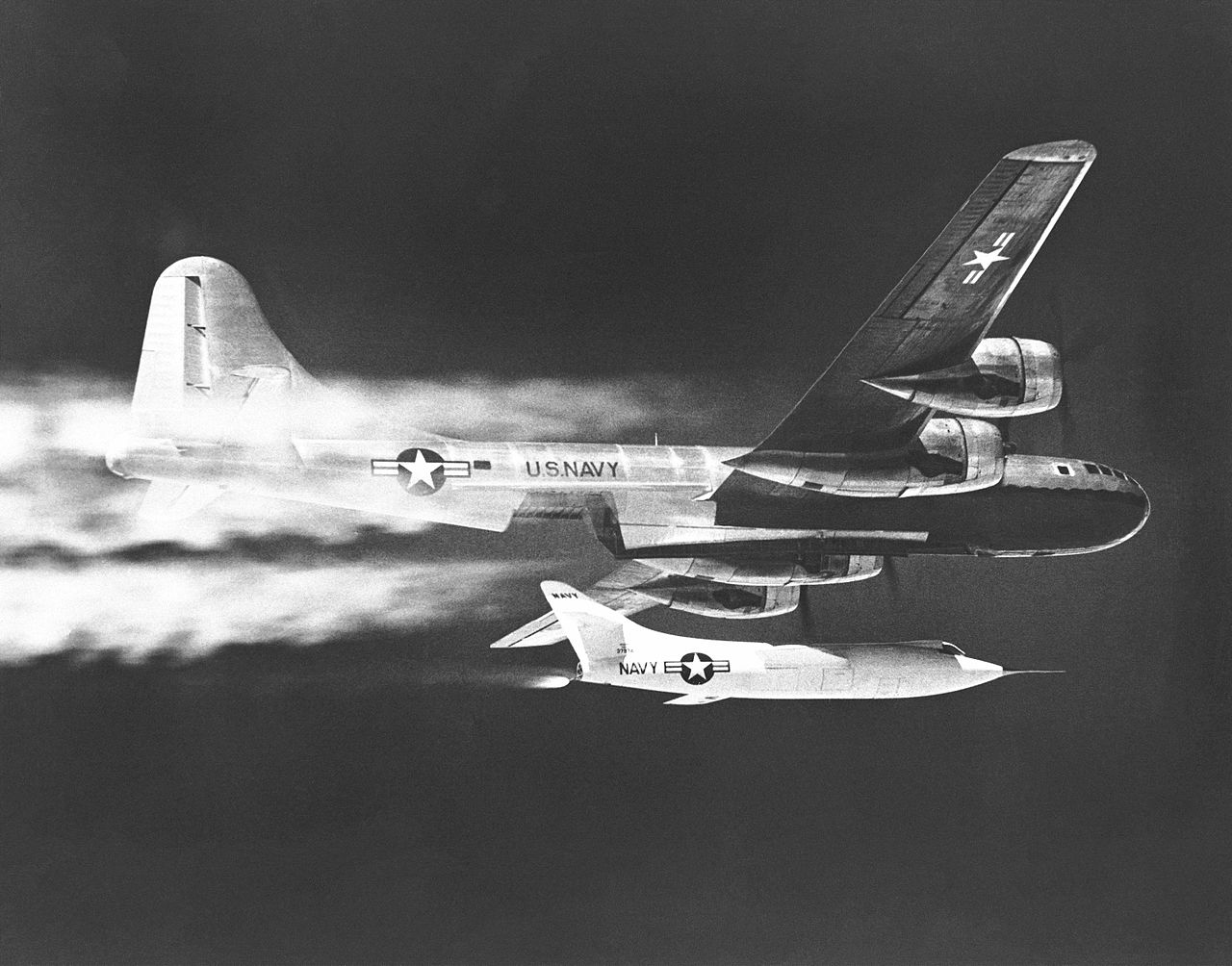Scott Crossfield claimed that he “just dropped the hint to the Navy that wouldn’t it be great if they could whip Yeager’s ass and beat him to Mach 2!”
The six Douglas D-558 research aircraft were the US Navy’s contribution to the supersonic X-Plane program. They were constructed as two different variants. Due to the inability of wind tunnels to duplicate these speeds in the late 1940s, pilots of experimental aircraft with extraordinary performance had to take great risks.
The D-558s exceeded their initial Mach 1 speed goal despite being delayed by their inventive but problematic powerplants and constrained by the cost of their air-launched sorties. In reality, Scott Crossfield’s D-558-2 was the first aircraft to surpass Mach 2.

Dr. Hugh Dryden at NACA was happy to help the USAF reach Mach 2 if they so desired, as stated by Peter E. Davies in his book Douglas D-558. Dr. Dryden was persuaded by Crossfield and Walter Williams, nevertheless, that there would be scientific advantages to pushing the D-558-2’s upgraded engine to its performance limits. Later, according to Crossfield, “just dropped the hint to the Navy that wouldn’t it be great if they could whip Yeager’s ass and beat him to Mach 2!” Rear Admiral Apollo Soucek of the Bureau of Aeronautics and Marion Carl persuaded the Pentagon once more to allow for a single Navy attempt at Mach 2 before Chuck Yeager was given the job.
Crossfield started testing the D-558-2 aircraft with a number of modifications on September 17, 1953. In order for Crossfield to raise pressures in the four rocket chambers, the “X-plane” actually had the nozzle extensions installed and a tank regulator in the cockpit. The two changes brought the overall thrust up to about 9,000 lb. With progressively higher top speeds, flights continued throughout October and November as stability and aerodynamic load tests. After launch, Crossfield would have to adhere to a highly exact climb, speed, and angle of attack, according to a flight profile that NACA calculated in mid-November. He would undergo a shallow dive after the “push-over” and accelerate to Mach 2.

After the LOX was loaded, NACA 144 (BuNo 37974) was meticulously prepared with a waxed finish, sealed panels, and a prolonged “cold soak” to allow the liquid gas to settle and be topped up, both on the ground and from the carrier aircraft’s top-up system when in the airborne. The procedure also extended the burn time by seven seconds. The stainless steel propellant vent tubes at the tail end were swapped out for lighter aluminum equivalents that were bent so they would burn off in the rocket efflux and reduce weight. With NACA pilot Stanley Butchart at the controls, the P2B-1S bomber (the US Navy’s rendition of the Boeing B-29) and its load took off on November 20, 1953.
Butchart served in a torpedo-bomber squadron with future US president George Bush during World War II as a naval aviator. He worked in research aviation for 25 years, making 12 flights in the D-558-1. For six years, he was the High-Speed Flight Station’s main multi-engined pilot, launching hundreds of experimental aircraft from B-29s and other carrier aircraft.

Crossfield readied to launch at 10,000 feet, and upon release, he lit all four rocket chambers and soared to 72,178 feet. He then pushed the plane into level flight and continued to accelerate for an additional 45 seconds until the rocket fuel ran out. He was shocked to see Mach 2.04 on his Mach meter at that point. He had surpassed all previous records for speed, the D-558-2 had finally surpassed its maximum design speed of Mach 2, and the USN held the records for both speed and altitude.
Yeager climbed aboard the modified Bell X-1A three weeks later, intent to significantly surpass Crossfield’s record in a contractor flight operation code-named “Operation NACA Weep.” The horizontal tail of the X-1A was thought to be effective up to Mach 2.3 at 72,000 feet, according to Yeager’s team, but instability issues had already been noted at Mach 1.8. Yeager took off on December 12 at a height of 30,500 feet and achieved Mach 2 at 76,000 feet before pushing over and into a shallow dive that reached Mach 2.4 before all of the flying controls lost their effectiveness.
The aircraft tumbled, completely out of control in a wild spin for 50,000 ft, battering him into near unconsciousness before he could recover it. Fortunately, the X-1A’s incredibly durable airframe was unharmed, and Yeager made it out alive with the remark, “Boy, I’m not gonna do that again.” It was his final flight in the rocket plane.
Douglas D-558 is published by Osprey Publishing and is available to order here.
Photo by NASA

